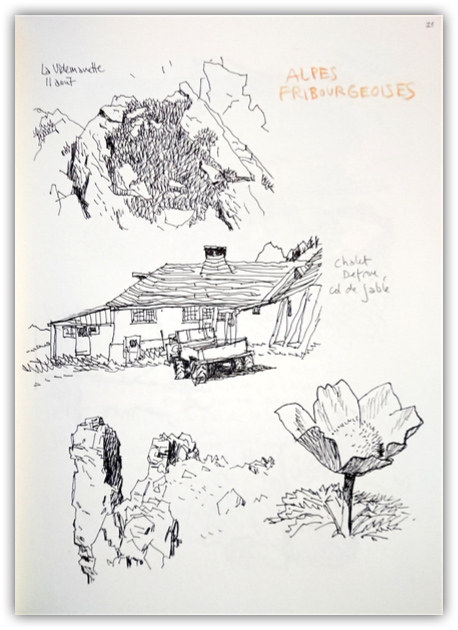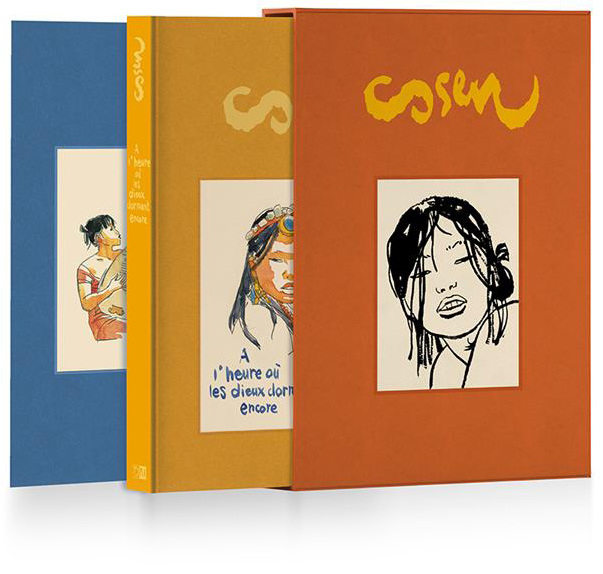
2021
Daniel Maghen

Interview with Cosey
about ‘Jonathan 17’ and this book:
click here
As most fans of Cosey will know, travels and documentation ‘on location’ are an important aspect of Cosey’s way of working: he travels to distant countries, makes photos, collects things like beer or wine labels and he makes sketches. A while after his trip, Cosey says he gets a certain feeling of nostalgia and this can be inspiration for his stories – at least inspiration for the backgrounds of his stories. He feels that the documentation and images he takes back from his travels give him the right and confidence to tell his stories in these distant places.
The pages and images of Cosey’s comics are careful, refined compositions, all aimed at telling the story in the best way possible. Elements from his documentations are combined and arranged to give his story a true feeling of reality.
I have always been interested in the creative process of rearranging real, documented elements into the composed reality in the albums. In dossiers to special editions of his albums and in the Jonathan Intégrales, and in Echo, we could already see many preparatory sketches. However, most of these sketches were made in preparation of the albums: drawings made at the drawing table, with a purpose in mind.
‘A l’heure où les dieux dorment encore’ allows us a view of Cosey’s drawing ‘on location’: quick sketches made while waiting for dinner, made while resting after a hike (or during a hike) or made in a museum. Observational drawings, often made with a bare minimum of means (and time): a sheet of paper and a pen. I love these quick sketches: you see the artist at work – taking notes, making a quick sketch, making corrections, exploring his subject. They are rough, spontaneous, direct notations where the artist tries to capture the environment in a few strokes.
These are also the kind of drawings where the artist is most vulnerable. No time and no means to polish a drawing or to make corrections. Often, not even a table available to work on. It gives the drawings their particular character – I believe you cannot come closer to the artist.

That is why I especially liked the chapters with drawings made in the Swiss Alps, Greece, Japan and India. I was surprised that the chapters about Tibet and China, in contrast, did not contain many drawings made on location. Because several stories of Cosey play in the USA, I had also expected some sketches ‘Made in USA’.
Cosey often told in interviews that he relies more on photographs for his documentation than on drawings, because it is a much faster way to capture the environment. Maybe he had no time for sketches during his trips to Tibet, China and the US? Or… was he more at ease during the other trips?
‘A l’heure où les dieux dorment encore’ is a treasure chest of a book, filled with jewels. Rough sketches, refined drawings, philosophic quotes and ideas, professional considerations of the artist, travel journal… it is a rich book.
On the title page, Cosey calls it a ‘Green Tea Table Sketchbook’, and that is a very appropriate denomination. It is a book that belongs on the table next to your lazy chair, to be picked up every now and then, to take in few pages at a time.



Limited edition

The limited edition (Tirage de Tête) consists of a box with the book (with a special cover) and an additional ‘cahier’ of 32 pages. 150 copies, numbered 1/150 to 150/150, signed by Cosey.
